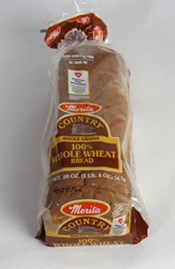September is whole grains month. The 2010 Dietary Guidelines recommend that we try to make half of our grain choices be whole grains. The grains food group includes: wheat, rice, buckwheat, bulgur (cracked wheat), oats, popcorn, quinoa, barley, cornmeal, rye and others.
Whole grains lose 25% of their protein along with 17 other nutrients when they’re refined. Even if refined grain products have been enriched by adding some vitamins and minerals, they are not as healthy as whole grains. Experts recommend that whole grains make up at least half the grains we consume. Researchers have shown that whole grains lower your risk for diabetes, heart disease, cancer, stroke, and obesity.
Whole grains are not hard to find once you know a few simple facts. First, whole grains are grains that include the bran, endosperm, and germ. There are not that many grains that we consume as whole grains. Look at the food label for clues as to whether the food does indeed contain whole grains. Usually, just looking for the word "whole" is a good start - for example, "whole wheat" or "whole oats." There are several other grains that are whole grains - corn, popcorn, brown rice, barley, wild rice, buckwheat, bulgur, and quinoa. Grains are called “refined grains” when only certain parts of the seed are used. Look at the food label for “100% whole grain," "100% whole wheat," or "100% whole oats.” A phrase like “multi grain," "wheat bread," or "made with whole grain” doesn’t mean the product is made entirely with whole grain. The color of the product is no help either. Sometimes brown coloring is added to a refined grain product to give you the impression that it’s whole grain. Other times, a white variety of whole grain wheat is used, making the whole grain product white.
Another place to look on the food label is the ingredients list. If the first ingredient listed is whole wheat or other whole grain and it’s the only grain or flour listed in the ingredients list, the product is whole grain. If several grains are listed in the ingredients list, check to see if they are all whole grain.
Remember that a product made with whole grain may have other ingredients that make it less than ideal. A product can be made from whole grain and also contain large amounts of sugar, unhealthy fats, or sodium.







